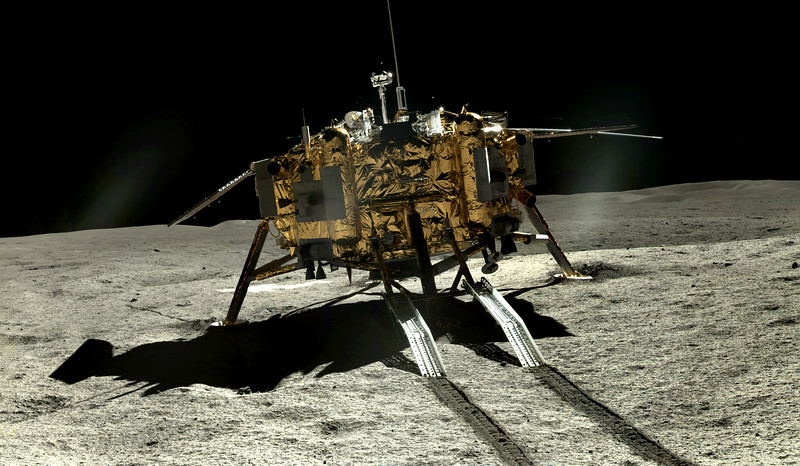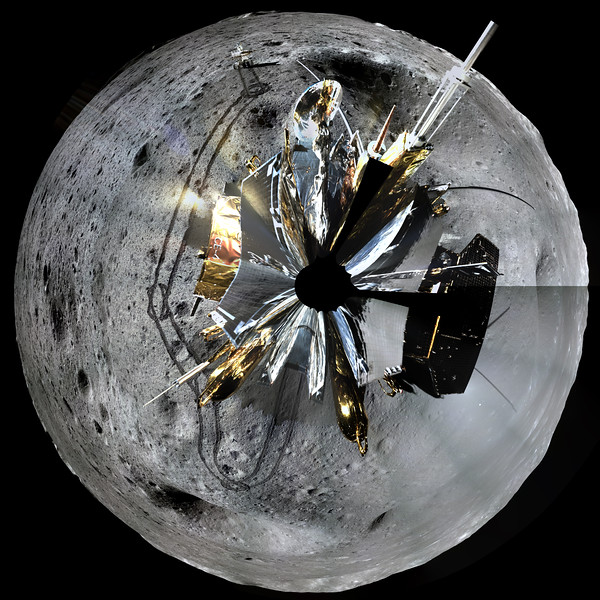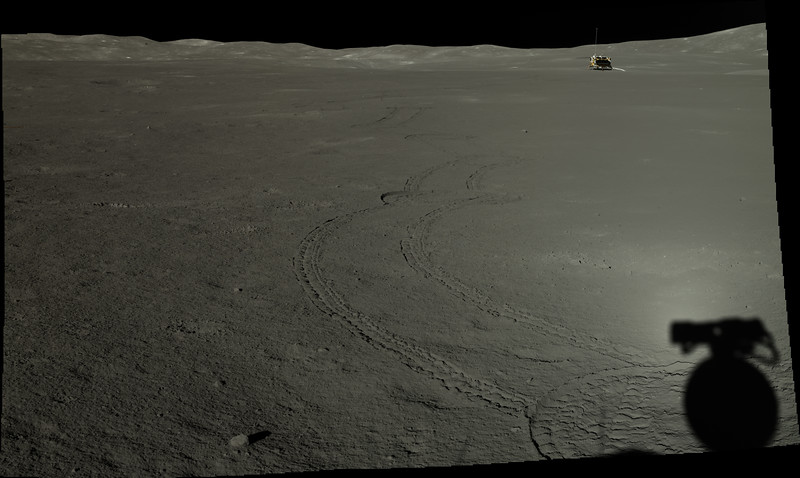Ever since it made its historic landing on Jan. 3rd, 2019, the Chang’e-4 mission and its Yutu 2 rover have been busy exploring the lunar surface. Just recently, the mission passed its first year of operations and earned the distinction of being the first rover to travel a record 357.695 meters (1,173.5 ft) on the far side of the Moon. And in between all that, the mission has also provided some truly fascinating images of the lunar surface.
Thanks to a data release issued on Monday (Jan. 20th), the public can now peruse through all of the high-resolution images taken by the Chang’e-4 mission. The data, which was released by the Ground Research and Application System (GRAS) of the Chinese Lunar Exploration Project, includes images of the far side of the Moon that were taken with the lander’s terrain camera and the panoramic camera on the Yutu-2 rover.
Included in the release are many images of the Von Kármán Crater (located in the South Pole-Aitken Basin) where the lander and rover made their soft landing last year. These images feature close-up and long-distance shots of everything surrounding the lander and rover. The data was transmitted back to Earth via the Queqiao orbiter, which is acting as a communications relay for the mission’s surface elements.

These images are something of a retrospective, providing a visual timeline for key points in the mission while also calling attention to the rover and lander’s surroundings. To make all these images accessible to the public, the GRAS team has uploaded the full archive of mission data to a dedicated website used by the China Lunar Exploration Program’s (aka. Chang’e Program) information services.
The release of all of this data is already causing quite the stir in the astronomical community. As Space.com reports, Doug Ellison – the engineering camera team lead for the Curiosity rover mission at NASA’s Jet Propulsion Laboratory (JPL) – downloaded a range of the data, processed many of the images, and made them available in a gallery (which you can see here).
These processes images show close-up views of small craters and lunar soil (aka. regolith) on the floor of the Von Kármán Crater. Also featured are shots of the distant skyline, multiple shots of the lander and rover, and Yutu-2‘s tracks in the soil. A few of the images also show the rover looking back towards the lander as it ventures farther away from it.
In addition to coloring and sharpening the raw images, Ellison also combined single images together to create larger images and panoramas – some of which he shared via Twitter. As you can see, some of the panoramas provide a wide view of the landscape, others give a cylindrical view of the terrain in the immediate vicinity of the rover.
Another brave soul to take a crack at the data is Philip Stooke of the Centre for Planetary Science and Exploration (CPSX) at Western University in London, Ontario. As a lunar cartographer, Stooke used the new data to refine maps that chart the progress of the Yutu 2 rover as it traveled over 357 meters (1,170 ft). Many more galleries have sprung up since the release, all of which detail the mission’s progress during its first 13 lunar days.
Because it is tidally-locked with our planet, each lunar day is equivalent to about 14 Earth days; during which time, the Sun is constantly in the sky. These are followed by lunar nights (also 14 Earth days), which are characterized by extremely cold conditions. Because the lander and rover are solar-powered, they go into hibernation mode during a lunar night and awaken again 24 to 48 hours after the next lunar day commences.
The rover began its 14th lunar day of operations last weekend (Saturday, Jan. 18th) while the lander followed on Jan. 19th. As of the writing of this article, the lander and rover have been operating on the lunar surface for a total of 389 days. Originally, the rover was intended to remain operational for three months while the lander was to remain in operation for a full year.

Looking ahead, the China National Space Agency (CNSA) plans to send several more missions to the Moon, which includes the Chang’e-5 mission that will land on the Moon by the end of 2020. This will be China’s first sample-return mission and will consist of collecting 2 kg (4.4 lbs) of lunar regolith from the Mons Rümker region and returning it to Earth.
This will be followed by Chang’e-6 and Chang’e-7, which will launch in 2024 and 2023 (respectively) and also land in the South Pole-Aitken Basin. The former, the second sample-return mission of the program, will bring lunar soil back from the south pole. The latter, meanwhile, will carry on where Chang’e-4 leaves off by conducting a comprehensive survey to determine if a lunar outpost can be built in the region.
The final mission, Chang’e-8 (which is scheduled to launch in 2027) will test technologies and lay the groundwork for China’s first crewed lunar mission – at this point, that mission is scheduled to take place by the 2030s. These are exciting times for space exploration, and even more exciting times lay ahead! If and when humanity sets up a permanent outpost on the Moon, we can expect that several nations will have had a hand in building it.
Further Reading: Space.com, moon.bao.ac.cn

